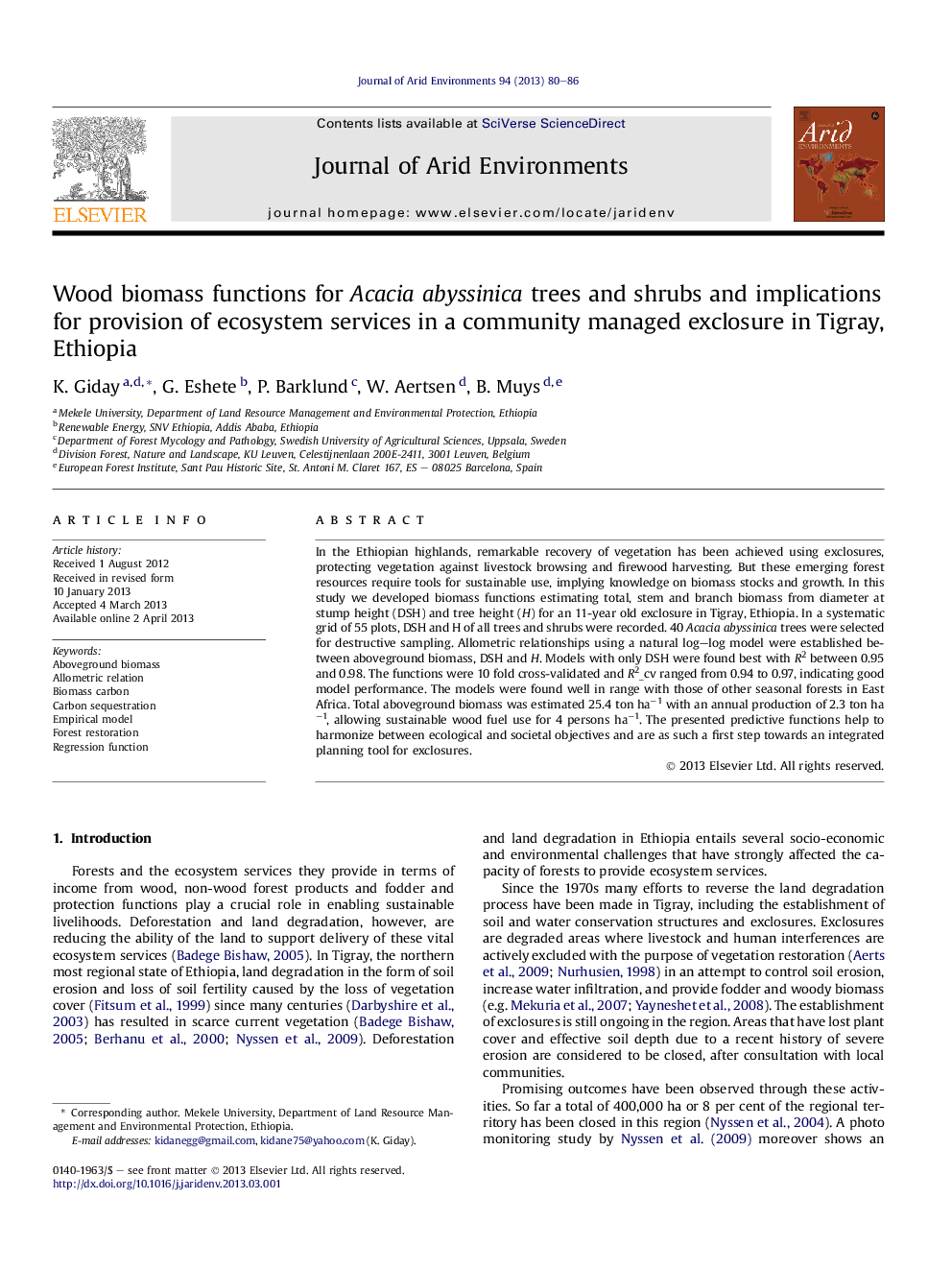| Article ID | Journal | Published Year | Pages | File Type |
|---|---|---|---|---|
| 4393169 | Journal of Arid Environments | 2013 | 7 Pages |
•We developed total tree, stem and branch biomass functions for Acacia abyssinica.•Allometric model was used based on its desired qualities for biological phenomena.•The functions were cross validated and compared with similar studies in Ethiopia.•Estimated aboveground biomass is 25.4 ton ha−1; annual production of 2.3 ton ha−1.•Functions will support sustainable energy planning and carbon financing.
In the Ethiopian highlands, remarkable recovery of vegetation has been achieved using exclosures, protecting vegetation against livestock browsing and firewood harvesting. But these emerging forest resources require tools for sustainable use, implying knowledge on biomass stocks and growth. In this study we developed biomass functions estimating total, stem and branch biomass from diameter at stump height (DSH) and tree height (H) for an 11-year old exclosure in Tigray, Ethiopia. In a systematic grid of 55 plots, DSH and H of all trees and shrubs were recorded. 40 Acacia abyssinica trees were selected for destructive sampling. Allometric relationships using a natural log–log model were established between aboveground biomass, DSH and H. Models with only DSH were found best with R2 between 0.95 and 0.98. The functions were 10 fold cross-validated and R2_cv ranged from 0.94 to 0.97, indicating good model performance. The models were found well in range with those of other seasonal forests in East Africa. Total aboveground biomass was estimated 25.4 ton ha−1 with an annual production of 2.3 ton ha−1, allowing sustainable wood fuel use for 4 persons ha−1. The presented predictive functions help to harmonize between ecological and societal objectives and are as such a first step towards an integrated planning tool for exclosures.
